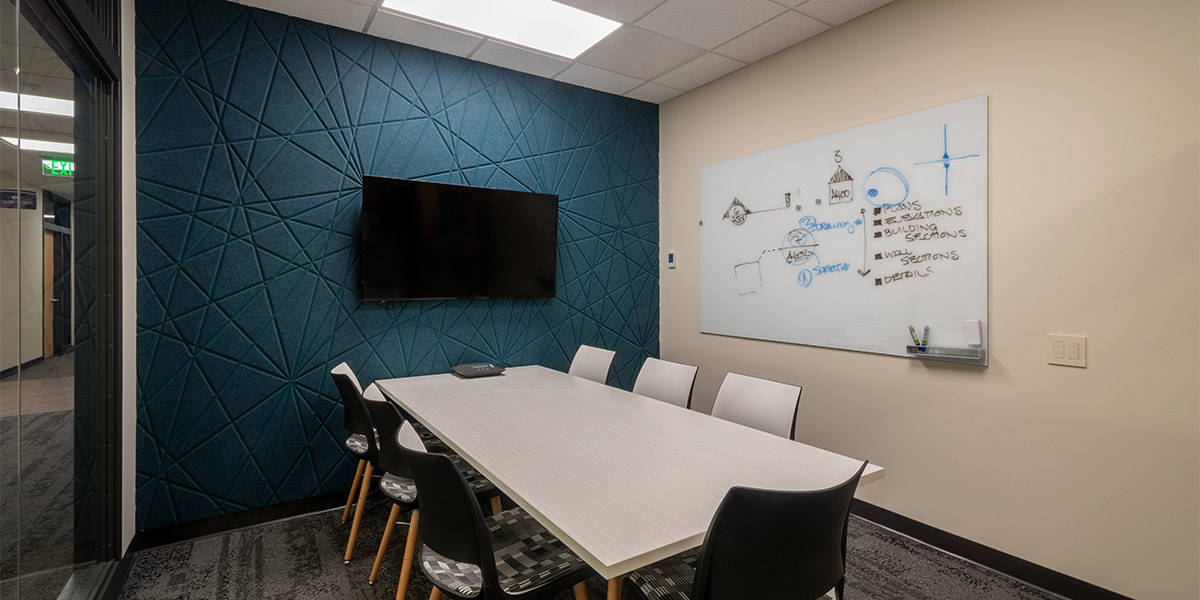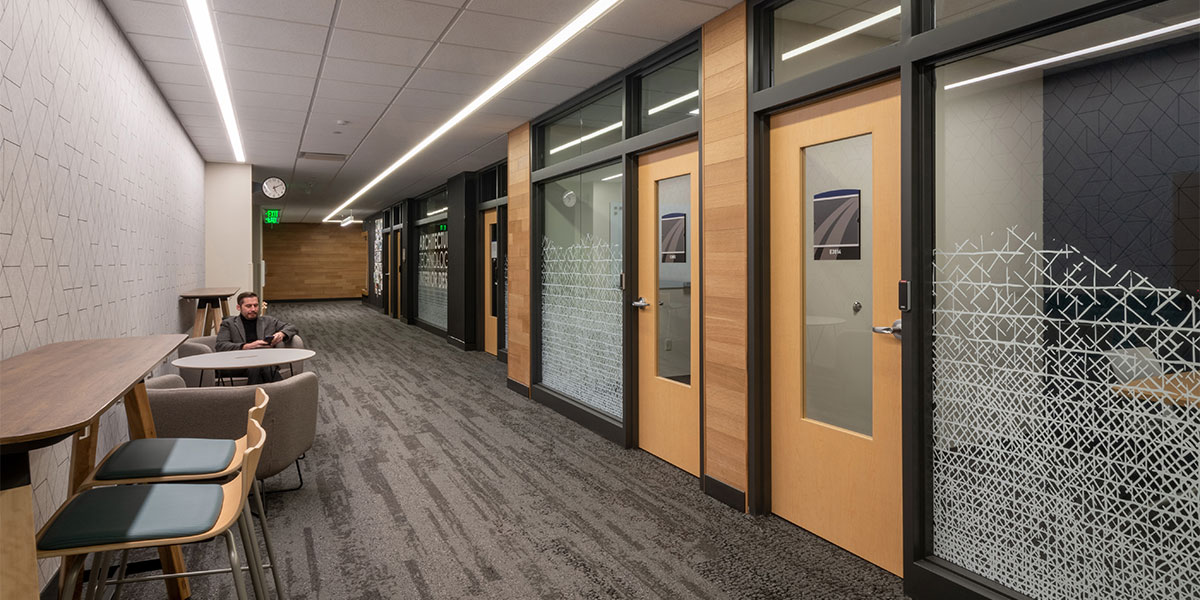Objective:
Collaboration is Key
Madison College offers top career training in many fields, including Interior Design and Architectural Technology. This project was more than a simple classroom remodeling—our team was brought on to design a new culture of collaboration between two historically disconnected units within the college. This space was to provide a unique and inspiring environment for students to learn and discover and draw inspiration from real-world collaborative work environments. Previously in different buildings, we brought these two departments together under one roof, designing transparent and inspirational spaces for both students and faculty to collaborate in.
SOLUTION:
Inspiration Destination
As a space for budding architects and interior designers, this space needed to be as unique and inspiring as their biggest ideas. The elevated design of this space differentiates this suite from the rest of the campus as a standout arts and design destination. Here, students can gain inspiration from the environment around them as they create their own designs. With this in mind, the design team strategically exposed typically hidden elements by peeling back ceilings throughout the suite to expose the building’s inner workings. Corner wall benches, collaborative break-out spaces, production spaces, and classroom areas are all visually open and accessible. Instructors can use the environment around them as a textbook to demonstrate the layers of a building.
Featuring the Future
The design team also integrated details that allow students and faculty to modify the space, creating visual interest and showcasing the story of design by featuring student work. The large black wall of pin-up spaces in the corridors is a defining architectural feature where both departments can post their work, observe the relationships between the departments, and gain inspiration. These prominent pin-up spaces establish the architectural drawings, themselves, as a driving aesthetic of the suite.
Drawing from this inspiration, we have also incorporated a unique crosshatch pattern as a vinyl window decal throughout the suite. This pattern is an instantly recognizable “easter egg” for students and achieves the desired balance of visual privacy and transparency. Even the lighting fixtures in the booths across from the 3D printing studio are designed to be customizable. Students can 3D print their own work and change out the lighting shades. This learning environment takes students past the classroom, fully capturing an immersive learning experience.
Integration Station
To achieve the integration of the interior design and architectural technology programs into a single location goal, the design team focused on creating transparency between the three different workrooms at the core of the suite. The rooms were specifically labeled “Work Room A,” “Work Room B,” and “Design Library,” rather than staking a claim for only one department. The layout and production studio are not reserved just for interior design students but is designed to be open and inviting to all; similar to the model building studio and the design library. The same applies to the pin-up wall. This space not only highlights work from both departments but is also prominently featured in the public area at a highly trafficked intersection of corridors near the entrance. These living walls showcase professional growth and refined development as the students expand their skillsets throughout the semester.
Bringing these two departments together and facilitating their collaboration through open and transparent design mirrors features often seen in integrated design workplaces. This encourages students to develop important real-world soft skills that will benefit them in their future careers.
Drawing from this inspiration, we have also incorporated a unique crosshatch pattern as a vinyl window decal throughout the suite. This pattern is an instantly recognizable “easter egg” for students and achieves the desired balance of visual privacy and transparency. Even the lighting fixtures in the booths across from the 3D printing studio are designed to be customizable. Students can 3D print their own work and change out the lighting shades. This learning environment takes students past the classroom, fully capturing an immersive learning experience.

















